National
Canada’s birth rate plummets to an all-time low

From LifeSiteNews
Nine of Canada’s 10 provinces and three territories saw record-low fertility rates in 2024
Canada’s birth rate has plunged to an all-time low for the second year in a row and shows no signs of improving anytime soon.
According to Statistics Canada’s latest births and stillbirths’ data from 2024, the nation’s official fertility rate is 1.25 children per woman, lower than in 2023, which was 1.26 children per woman.
Overall, this is a 1.6 percent decrease from the previous year and is on par with data since 2009, which is the year the nation’s birth rate started a slow and steady decline.
As it stands now, Canada is not unlike European countries such as Italy and Switzerland, as well as Japan in that it’s considered to be an “ultra-low fertility” nation.
Nine of Canada’s 10 provinces and three territories saw record-low fertility rates in 2024. The province with the lowest rate is British Columbia at 1.02, followed by Nova Scotia at 1.08, Prince Edward Island at 1.10, and Ontario at 1.21.
Quebec stands at 1.34, the Northwest Territories at 1.39, Alberta at 1.41, Manitoba at 1.50, and Saskatchewan at 1.58. The territory of Nunavut is at 2.34.
In order for a country to maintain its population, the birth rate must be 2.0 or higher, with it needing at least 2.1 births per woman for a nation to grow, irrespective of immigration.
Not only are Canadian women having fewer babies, but the average age of childbearing has gone up. It now stands at a record high of 31.8 years. By comparison, it was 26.7 in 1976.
In total, there were 368,928 babies born in Canada from 2024 to 2025, a number that would be much greater if not for abortion. For context, in 2022, 97,211 Canadian babies were aborted.
When looking back, Canada’s fertility rate hit an all-time high of 3.94 children per woman in 1959. The birth rate then plummeted after the introduction of the birth control pill in the 1960s. The birth control pill was decriminalized in Canada in 1969.
Overall, Canada’s birth rate has declined for decades. Canada’s current Liberal federal government of Prime Minister Mark Carney, like Prime Minister Justin Trudeau before him, has been heavily promoting contraception and abortion and using immigration as a means of growing the population.
As noted by LifeSiteNews’ Jonathon Van Maren, a recent scheme by the Trudeau Liberals to offer free contraception to all Canadians will only worsen Canada’s current demographic crisis.
As reported by LifeSiteNews, the reality is that due to abortion, birth control, and the fact that fewer people are starting families, Earth’s population will hit a “peak” before the end of the century, with most nations facing sharp population declines in the next 25 years.
Even secular Canadian academia has warned that the country is facing a population crisis, with the Macdonald-Laurier Institute saying earlier this year that the nation’s drop in fertility is “a major public policy challenge requiring immediate federal action.”
Crime
Pierre Poilievre says Christians may be ‘number one’ target of hate violence in Canada

From LifeSiteNews
Anti-Christian hate crimes are not properly documented in Canada, but media reports indicate a continuing wave of violence against churches.
Conservative leader Pierre Poilievre said Monday that Christians may be the “number one” target of hate crimes when asked how he would combat the eruption of attacks on churches in Canada.
“One hundred churches have been burned,” Poilievre said, according to a CBC News report. “Christians may be the number one group that is victims of hate-based violence. But, of course, it’s not politically correct to say that.”
“This anti-Christian hate has got to stop,” said Poilievre, referring to the arson crimes as “terrorist attacks.”
Catholic and Christian churches have seen a spike in arson attacks after a public narrative that Catholic priests had murdered children said to have been found in unmarked graves at the site of Canadian indigenous residential schools run by both the Catholic Church and other Christian churches.
The attacks have reached epidemic proportions. Last week, All Saints Ukrainian Orthodox Church, northeast of Edmonton, was destroyed after being set ablaze by a 23-year-old and a 26-year-old from Saddle Lake First Nation.
At least four other churches in Canada have been set afire this year, according to media reports, including a Catholic church in Saskatchewan, a joint Anglican-Lutheran church in Manitoba, a Greek Orthodox church that had been set afire three other times in recent years, and a Salvation Army church in Newfoundland.
Catholic churches in particular have seen a big spike in violence as compared with previous years, with a jump from 43 police-reported anti-Catholic crimes in 2020 to 155 in 2021, according to Statistics Canada data.
However, hard data on the incidence of overall anti-Christian attacks in Canada is not yet available because the currently cited data on anti-religion hate crimes in Canada does not account for non-Catholic Christian churches.
In recognition of this vacuum, the Evangelical Fellowship of Canada is planning to launch an anti-Christian hate crime tracker.
Poilievre ripped liberals for enabling the rash of church attacks, calling out their policies of reduced penalties for arson, their redirection of resources from police and border services to targeting farmers and hunters, and their “divisive” identity politics.
He said he would take the “opposite approach” if elected prime minister, including “tougher laws” for hate crime perpetrators and redirecting resources away from targeting “sportshooters” and toward police services.
“Because frankly, Canadians of all faiths, including Christians, deserve to worship in peace,” he said.
Business
Ottawa’s civil service needs a Chrétien-style reset
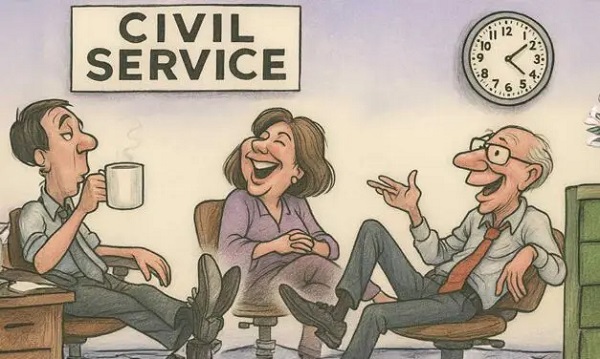
This article supplied by Troy Media.
If Carney followed Chrétien’s lead, he could cut 64,000 jobs and save $10 billion a year
They say bureaucracy grows to meet the needs of the expanding bureaucracy. That certainly seems to be Ottawa’s motto these days, with the number of federal civil servants swelling by more than 100,000 over the past decade.
As the bureaucracy grew, so did the resources it devoured and the burden it dumped on the federal budget. If the Carney government is serious about tackling its spending problem, it has no choice but to shrink the civil service. To its credit, the government has already signalled this may be coming, with Finance Minister François-Philippe Champagne directing ministries earlier this month to cut program spending by 7.5 per cent in 2026-27, with deeper cuts to follow.
Payroll tells the story. When Justin Trudeau came to power in 2015, Ottawa was spending about $39.6 billion on employee compensation. Last year, that figure hit $71.1 billion—a staggering 79.5 per cent jump in nine years. Numbers that big are hard to picture, so here’s what they mean: $71.1 billion equals roughly $1,700 per Canadian, or about $7,000 for a family of four.
That’s a lot of money. Given those costs, Canadians are right to ask whether they’re getting anything close to value. The answer, judging by opinion surveys, is no.
Passport lines still snake around the block. Clearing customs at the airport remains a test of endurance. And if you dare call the Canada Revenue Agency, pack a lunch, you’ll be on hold long enough to need it. For all the extra spending, everyday frustrations remain the same.
If all that spending hasn’t delivered better results, it’s a flashing neon sign that resources are being wasted. The civil service is a prime candidate for cuts that could be made with little, if any, impact on the quality or speed of services Canadians actually receive.
The average compensation for a full-time federal job is now around $150,000 a year. That includes salary, taxpayer-funded pension contributions, and a generous menu of benefits. By contrast, the average Canadian earns about $60,000—the same taxpayer footing the bill— and the inequity speaks for itself.
The problem isn’t just the cost but the culture. In the private sector, businesses constantly ask whether jobs are necessary and whether people can be redeployed. In government, the tendency is to keep hiring, with little scrutiny of whether those positions are truly needed.
Yet there is precedent for Ottawa getting serious about reform. In the 1990s, Jean Chrétien’s government undertook a sweeping review that eliminated more than 17 per cent of federal positions.
If the Carney government followed that model, it could trim about 64,000 taxpayer-funded jobs and save at least $10 billion a year.
With Ottawa projected to run a deficit of over $40 billion this year, one of the largest structural deficits outside of the pandemic years, Canadians should expect—no, demand—an equally ambitious review.
Renaud Brossard is vice-president of communications at the Montreal Economic Institute, a think tank with offices in Montreal, Ottawa and Calgary.
Troy Media empowers Canadian community news outlets by providing independent, insightful analysis and commentary. Our mission is to support local media in helping Canadians stay informed and engaged by delivering reliable content that strengthens community connections and deepens understanding across the country.
-
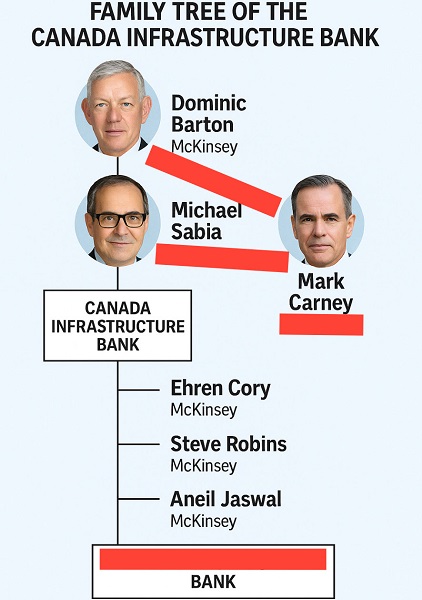
 Business2 days ago
Business2 days agoDominic Barton’s Shadow Over $1-Billion PRC Ferry Deal: An Investigative Op-Ed
-

 Alberta2 days ago
Alberta2 days agoAlberta refuses to take part in Canadian government’s gun buyback program
-
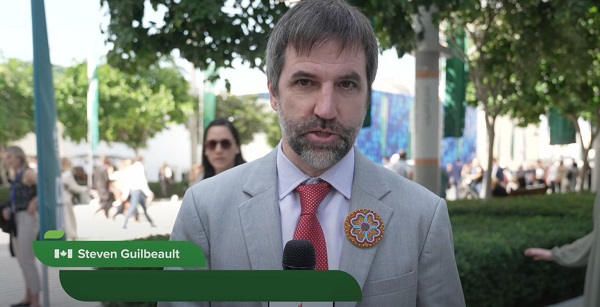
 Censorship Industrial Complex2 days ago
Censorship Industrial Complex2 days agoCanada To Revive Online Censorship Targeting “Harmful” Content, “Hate” Speech, and Deepfakes
-
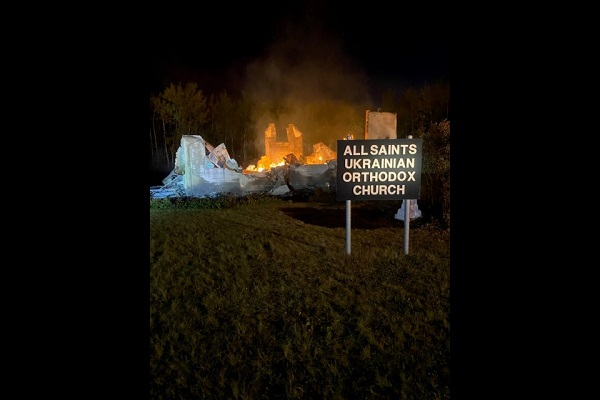
 Alberta2 days ago
Alberta2 days agoOrthodox church burns to the ground in another suspected arson in Alberta
-

 Alberta2 days ago
Alberta2 days agoAlberta puts pressure on the federal government’s euthanasia regime
-

 Fraser Institute1 day ago
Fraser Institute1 day agoAboriginal rights now more constitutionally powerful than any Charter right
-
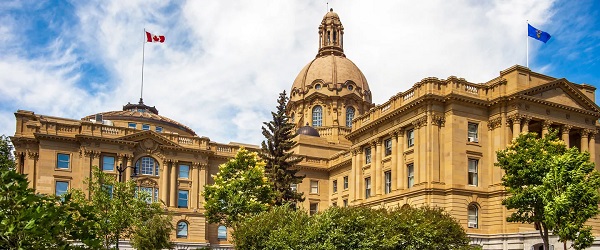
 Alberta1 day ago
Alberta1 day ago$150 a week from the Province to help families with students 12 and under if teachers go on strike next week
-

 Business1 day ago
Business1 day agoNew PBO report underscores need for serious fiscal reform in Ottawa








